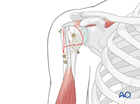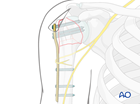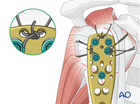Nonoperative
Main indications
Supporting indications
- Minimally displaced, stable fractures
- Risks of surgery outweigh benefits
Advantages
- No operative risks
- No anesthetic risks
Disadvantages
- Must accept fracture alignment
- Possibility of additional displacement
- Risk of poorer functional outcome
Supporting indications
- Minimally displaced, stable fractures
- Risks of surgery outweigh benefits
Advantages
- No operative risks
- No anesthetic risks
Disadvantages
- Must accept fracture alignment
- Possibility of additional displacement
- Risk of poorer functional outcome


















